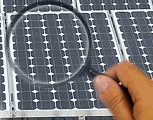Solar power is often the victim of detractors; sometimes drawing ire from those with a vested interest in maintaining fossil fuel based economies, but also from uninformed parties perpetuating myths or sowing seeds of doubt in relation to renewable energy.
Nathan Myhrvold, the former Chief Technology Officer of Microsoft, is causing a stir due to reported comments stating that solar panels contribute to global warming.
According to the soon to be released book “Superfreakonomics”, the sequel to the best-seller “Freakonomics”, Mr Myhrvold had this to say:
“The problem with solar cells is that they’re black, because they are designed to absorb light from the sun. But only about 12 percent gets turned into electricity, and the rest is reradiated as heat–which contributed to global warming.”
While all electricity generation systems will create heat in their operations, Pablo Päster, a greenhouse gas engineer and writer for TreeHugger.com, challenged this statement by comparing solar panel based electricity production to a coal fired power plant.
Mr Päster says that a fossil fuel based power plant directly adds at least 1.6 times more heat to the atmosphere than solar panels. Mr. Päster also points out that solar panels don’t generate any greenhouse gas emissions, but coal-fired power plants emit about 2 pounds of carbon dioxide for every kilowatt hour of electricity produced. He also mentions that many solar cells are blue, not black and that solar panels are often installed on rooftops, which also radiate heat after being e exposed to the sun.
According to Australian solar power solutions provider Energy Matters, one of the most common misconceptions they hear regarding solar power is that it takes more energy to create a solar panel that what it outputs over its lifetime.
Information from the Energy Matters web site states an assessment from the International Energy Agency in mid 2006 concluded that roof-top solar panel systems recover their energy content from manufacturing and recycling in under 2 years in Australia.
Once the panels have reimbursed their initial energy input, roof-top solar arrays can avoid the emission of 40 tonnes of CO2, depending on their location and on the local electricity mix available. During their 30 year lifespan, home solar power systems are expected to produce around 17 times the amount of energy needed for manufacture, installation and dismantling.












































